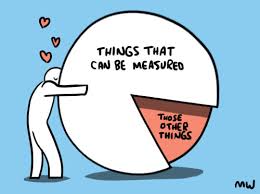Season Three B, Episode Two. Podcast recap! (And if you missed the podcast, you can find it here.)
Podcast Recap: Season 3b, Episode 2
In this week’s podcast we focused on tips for finding and recruiting the right talent. It’s 2018 y’all, and it’s no longer enough to simply post a job ad, cross your fingers, and hope for the best. Today’s talent is connected, to everything, everyone, everywhere, and so you must be too.
In order to create or build or grow the best team possible, you’re going to have to do a bit of work – not a ton, but enough.
Let’s take it one step at a time. Our first question is:
Who Are You Looking For?
The answer to this question requires a bit of self awareness. It’s awfully tempting to hire people who are just like us – after all, you know how to work with them, you know where to find them, and it’s EASY.
Of course, easy isn’t always RIGHT.
If you hire a team full of people who are just like you, you’re missing out on creativity, diversity, and the possibility of alternative, better, approaches to business.
Instead, think about your style and what gaps you’d like to fill. Are you super creative but not that great at execution? (be honest, now…) Are you a super analytical person who can get stuck in process? (My hand is raised for this one.) Are you just about getting things done, and you miss out on important details? (You know who you are…)
What about your team? Are there gaps there that you’d like to fill? Generational gaps? Gender gaps? Skill gaps?
It’s important that you do a gap assessment, not only of your own style, but also of your current team. Figure out what is missing, and think about the ideal person that could fill that spot.
Second question:
Have You Written it Down?
Do you have a Job Description? Not just a Job Ad or Posting – an actual, robust, Job Description (JD) that not only explains the job, but is written in a way to excite and attract the person you’re looking for.
It’s just smart. The one-size-fits-all JD is officially old school, so if you’re looking for creative types, then your JD better be creative. If you want a young Gen Z, then you’d better consider the things Gen Z’s love (being connected, flexible work, using the latest technology, autonomy). (Click Here for an article on attracting Gen Z talent.)
Tell a story about your company that will show your target people why they want to work for you. What is the culture like? Are there any perks on this job? Think about titles too. Are they old fashioned (Customer Service Representative) or modern (Customer Rockstar)?
Don’t forget to carefully consider the soft skills that you are looking for. More and more research exists on the importance of character in job success, so what character elements are important to you? Do you need relationship builders? People who can handle ambiguity? People who display high self-confidence and persistence? Someone who is courageous in the face of adversity? (Click here for an interesting research paper on character and leadership from the Ivey Business Journal.)
There is no one “right way” to structure your JD. So much depends on your audience, which is why the first step was thinking about WHO you’re targeting. Only then should you consider HOW you’re going to target them, and the first step in an amazing JD. (Click Here for an article on considering content and format of a JD.)
And by the way, JD writing isn’t everyone’s skillset. There are professionals out there who can help you, and it’s worth it!
Final question:
Who Knows That You’re Looking?
Google the top job posting sites, and you’ll get different answers depedning on the job category (tech, pharma, government), whether it’s a single job posting site (Monster or Dice), or a site that bundles other sites (Indeed). There are “boutique” sites, big sites, small sites, Google sites, LinkedIn sites… it can be overwhelming.
In addition to being overwhelming, you are likely to get 100’s (maybe 1000’s) of applications, and that can take time, energy, and even money (if you use a screening service) to sort through.
We aren’t suggesting you refrain from posting on a job site. What we are suggesting is that you at least supplement that listing with some networking. This helps you get the word out that you’re looking, and you never know what you’ll find out. Consider letting people know in any number of networking possibilities:
- In the workplace: your own team, larger meetings or department events, committees, intra-professional events
- Outside the workplace: conferences, professional associations, drinks with colleagues, your circle of friends
Start the conversation with, “Who do you know who…”
Once you’re connected to someone, you can encourage them to apply. Remember, this isn’t about circumventing the established hiring practice, it’s about encouraging someone to put their name in the hat. Their success within the process is then up to them!
If you do the work to make sure you really know who you’re looking for, and the work to write the job description to appeal to the person you want to hire, and then do the work to let people know you’re looking for someone, you will be much more likely find that perfect candidate.
Until next time,
Ruth.



 Hmm. Interesting. Not sure I knew that explicitly. Thank heavens for the interweb. Either way, the day off in the middle of summer where I always go to a cottage got me thinking about being Canadian and office culture.
Hmm. Interesting. Not sure I knew that explicitly. Thank heavens for the interweb. Either way, the day off in the middle of summer where I always go to a cottage got me thinking about being Canadian and office culture. I went into Lumbergh’s (not his real name…but there is a movie reference here) office and said: “I made an error in the system. This money is coming out of this years budget, not last years. This is how I’m going to fix it so this never happens again. I’m SO sorry.” Lumbergh turned beet red with rage, and then immediately resumed his natural “public service pale,” and said – “thanks for owning up to it, not making excuses about the system, and for your apology. Let’s move on”. Now, I wasn’t normally a fan of Lumbergh, but in that moment I could’ve hugged him.
I went into Lumbergh’s (not his real name…but there is a movie reference here) office and said: “I made an error in the system. This money is coming out of this years budget, not last years. This is how I’m going to fix it so this never happens again. I’m SO sorry.” Lumbergh turned beet red with rage, and then immediately resumed his natural “public service pale,” and said – “thanks for owning up to it, not making excuses about the system, and for your apology. Let’s move on”. Now, I wasn’t normally a fan of Lumbergh, but in that moment I could’ve hugged him. Don’t say sorry when you are late for the 100th meeting in a row. You clearly aren’t sorry because you aren’t fixing your complete lack of respect for others’ time.
Don’t say sorry when you are late for the 100th meeting in a row. You clearly aren’t sorry because you aren’t fixing your complete lack of respect for others’ time.
 awkward asking these questions. I guarantee that this moment of mild awkwardness is FAR less painful than arriving at TWCC (Toxic Workplace Culture Central). Read more on the signs of a toxic workplace culture
awkward asking these questions. I guarantee that this moment of mild awkwardness is FAR less painful than arriving at TWCC (Toxic Workplace Culture Central). Read more on the signs of a toxic workplace culture 


 Use this information to tell a SHORT brief story about how something in step 1, happened to you. Don’t go on-and-on. And despite your brain DYING to tell this person how your business, idea, product will be perfect for them, take some time to go to step 3.
Use this information to tell a SHORT brief story about how something in step 1, happened to you. Don’t go on-and-on. And despite your brain DYING to tell this person how your business, idea, product will be perfect for them, take some time to go to step 3.
